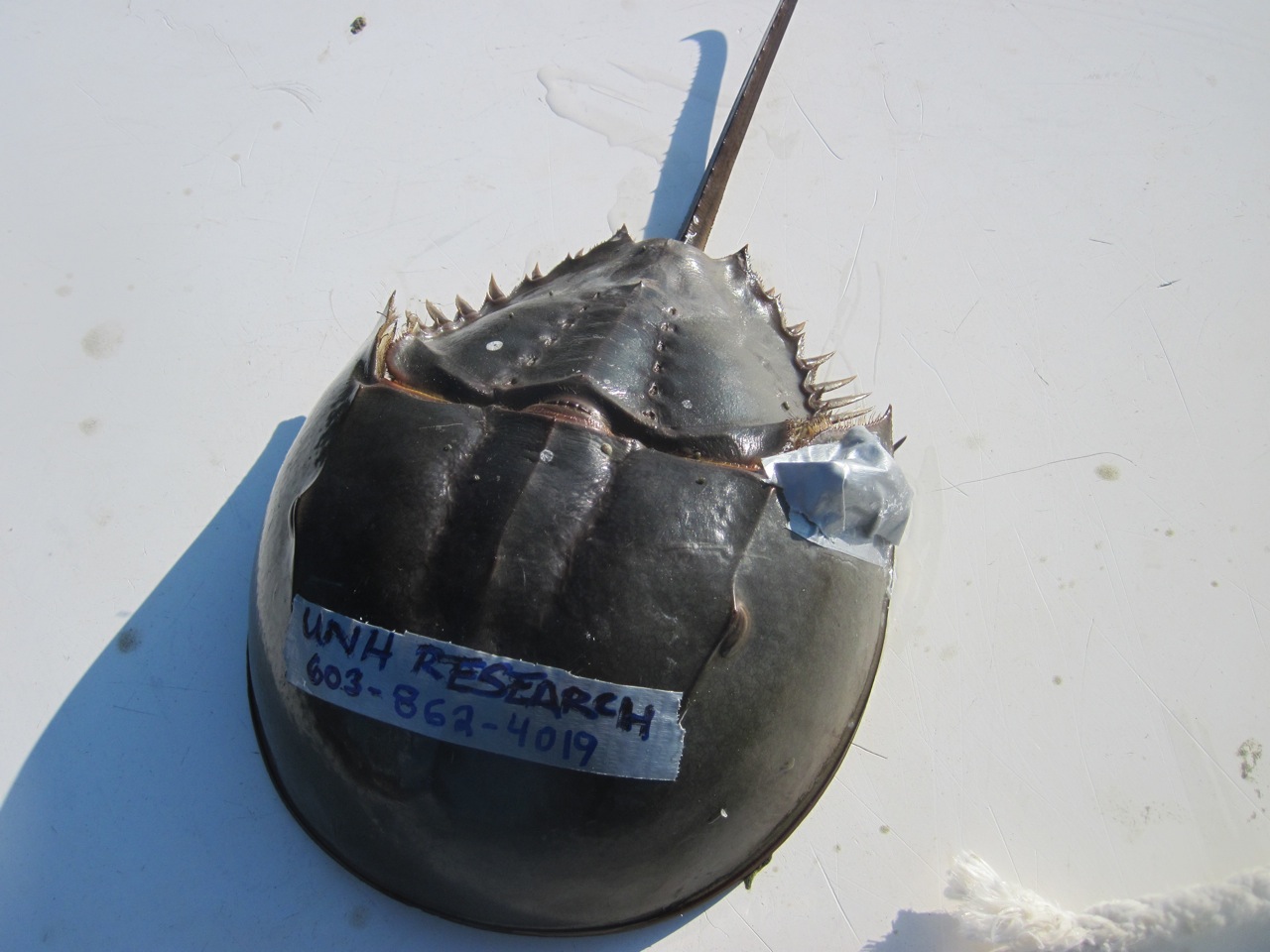Horseshoe Crab
Field Behavior
American horseshoe crabs, Limulus polyphemus, offer an interesting and accessible model system for investigating different types of biological rhythms and the environmental factors that influence their expression. Their most well documented behavior, mating, occurs every year, in the early spring and summer, and appears to be very closely associated with natural tidal rhythms (Rudloe 1980; Cohen and Brockmann 1983; Barlow et al. 1986; Brockmann 2003). They are also known to possess a circadian clock that influences the lateral eyes, making them much more sensitive to light at night (Barlow et al. 1980; Kaplan and Barlow 1980; Barlow 1983). Thus, these animals appear to have one or more biological clocks that are capable of keeping track of the circa 12.4 hour tidal cycle as well as the more typical 24 hour daily cycle (and possibly seasons). Our overall objectives during the past several years have been to determine: 1) How far do they move within the estuary and do their movement patterns vary with the seasons in a systematic manner; 2) How much of Limulus behavior is under the influence of a tidal clock vs. a circadian clock and; 3) What environmental factors determine which biological rhythm they express during different times of the year?
Throughout our investigations we have used a combination of field and laboratory studies to address the aforementioned questions. While laboratory investigations allow us to control some of these factors and thus dissect out the specific mechanisms that give rise to various types of biological rhythms , field studies are necessary to establish the “normal” behaviors of horseshoe crabs and develop hypotheses about the factors that influence the expression of different types of behaviors.

Papers
(accepted) Cheng, H., CC. Chabot, and WH. Watson III. Influence of environmental factors on spawning of the American Horseshoe Crab (Limulus polyphemus) in Great Bay Estuary, New Hampshire, USA. Estuaries Coasts.
2010, W.H. Watson and C.C. Chabot. High resolution tracking of adult horseshoe crabs Limulus polyphemus in a New Hampshire estuary using fixed array ultrasonic telemetry. Current Zoology 56: 599-610. PDF
2010, S.Y. Schaller, C.C. Chabot and W.H. Watson. Seasonal movements of American horseshoe crabs Limulus polyphemus in the Great Bay estuary, New Hampshire (USA). Current Zoology 56: 587-598. PDF